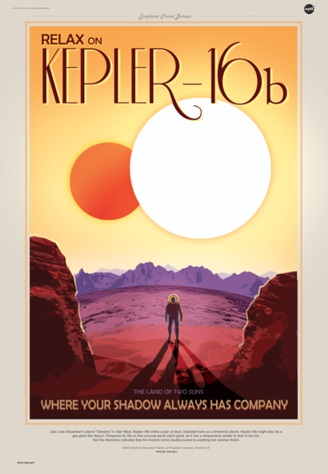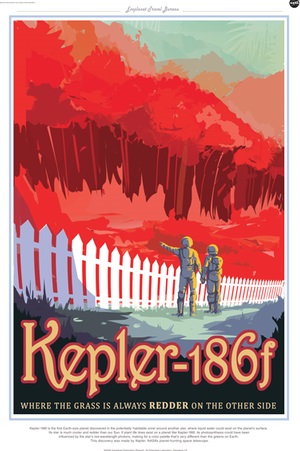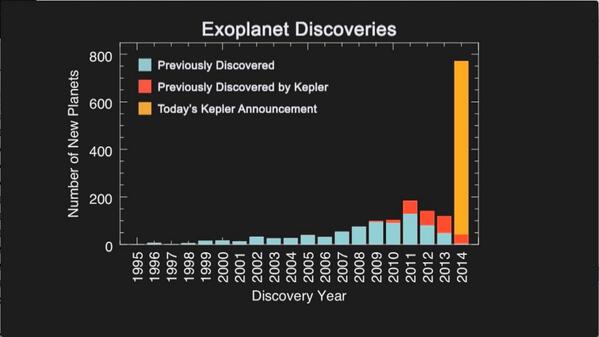

Haunting the Web Since 1999



For the first time, Kepler discovers an exoplanet near the frost line, which may help us better understand the formation of worlds. “[The frost line] explains why our gas giants are rich in ice and water, any why the rocky planets (Mercury, Venus, Earth, and Mars) began their existence as very dry worlds; water only arrived later via comets.”

NASA announces 715 new planets found by the Kepler telescope, and that’s only from the first two years of data. “About 94 percent of the new alien worlds are smaller than Neptune, researchers said, further bolstering earlier Kepler observations that suggested the Milky Way galaxy abounds with rocky planets like Earth…four of the worlds are less than 2.5 times the size of Earth and reside in the ‘habitable zone,’ that just-right range of distances that could allow liquid water to exist on their surfaces.”